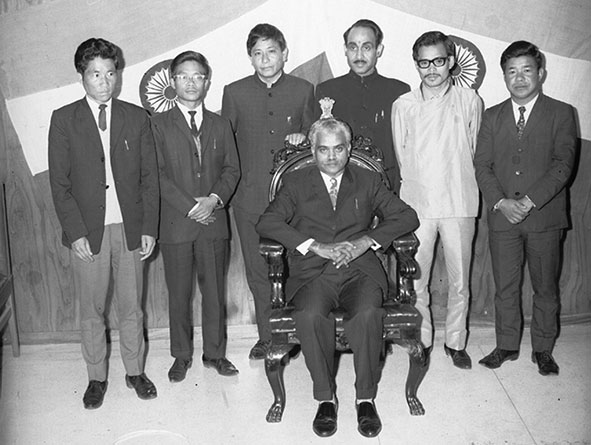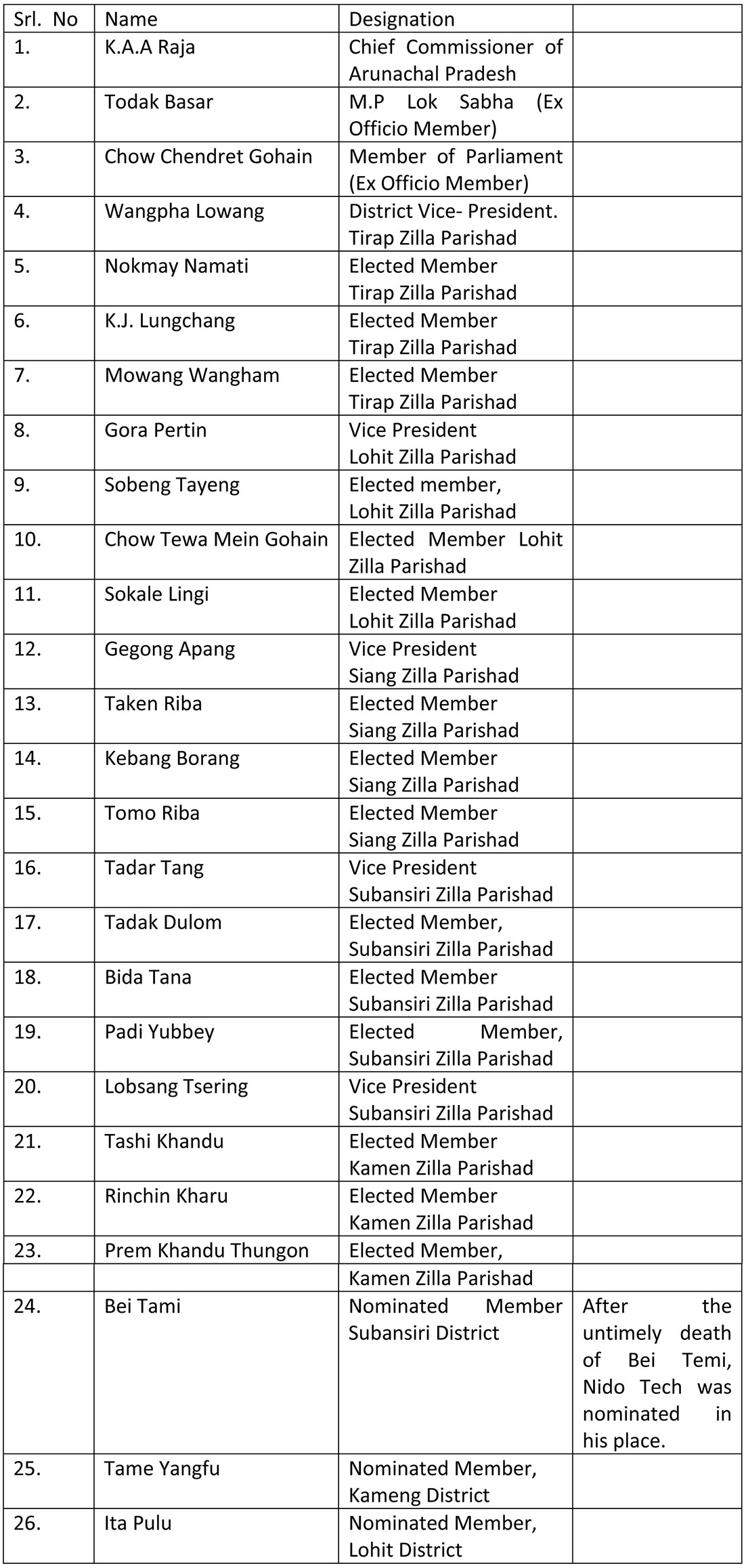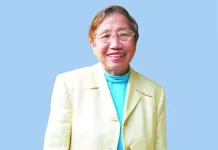[ Dani Sulu ]
For the present generation and generations to come must know, on whose shoulders the present edifice of human civilization stand, the stories of past that made the present world and shaped the future path, needs to be told, and their stories passed on to the younger generations, which will guide them in maneuvering through the complex process of growth of human civilization. It is the responsibility of every generation to pass on the past stories and what they have learnt thereof to the next generation to keep the continuity of human progress. Each of us is the lynchpin that holds the past and connects to the future, in the long story of human civilization.
Arunachal Pradesh has not figured in the larger context of human story in the past. But now, as we become more aware of the world, the onus is on each one of us to make the world aware of us by sharing the story of our people and our state, and find our own footholds in the larger book of human history.
In my last article on the founding fathers of Arunachal Pradesh, I had shared how the Agency Council members had laid the first foundation of representative form of governance, how they named the then NEFA as Arunachal Pradesh and brought about the formation of union territory of Arunachal Pradesh and helped in founding it’s capital, Itanagar. In this sequel to my previous article, I shall try to relate the story of the Pradesh Council and its members and the formation of the first Arunachal Pradesh Legislative Assembly. The Pradesh Council was the successor to the Agency Council and a precursor to the formation of the legislative assembly.
The Pradesh Council (1972-75)
The North Eastern Areas (Reorganization) Act, 1971, amended Article 240 of the Constitution and provided for creation of three states of Manipur, Meghalaya and Tripura and
two union territories of Arunachal Pradesh (formerly known as NEFA) and Mizoram. The NE Reorganization Act, 1971 provided for renaming of the NEFA as Arunachal Pradesh as recommended by the Agency Council in its fourth session. The Act also provided for replacing the Agency Council with the Pradesh Council, at the top of the panchayat raj system which acted more or less like legislative assembly of other states. The newly constituted Pradesh Council was composed of the following members:
- Vice presidents of zilla parishads who were also known as district vice presidents.
- Three representatives from each zilla parishad of five districts.
- Three members who were nominated by the chief commissioner to represent such tribal communities who had not obtained any representative in the council.
- The two members of parliament from Arunachal Pradesh.
- The chief commissioner of Arunachal Pradesh.
The elections to the second panchayat body were held under the NEFA (Administration) Supplementary Regulation, 1971, during May-June 1972. The elections to the gram sabha were held during May 1972. Then followed the elections to the anchal samiti, the zilla parishad and the Pradesh Council. There were 44 anchal samities, five zilla parishads and a Pradesh Council which was at the top of the pyramid with representatives from all the zilla parishads. The gram sabha members were directly elected by the adult members of the gram sabha constituency. However, elections to the anchal samiti, the zilla parishads and the Pradesh Council were indirectly elected. The gram sabha members elected anchal samiti members and anchal samiti members elected zilla parishad members and also the vice president of their respective anchal samiti segment. The elected members of zilla parishad and the vice presidents of anchal samiti elected one amongst themselves as zilla vice president, which was also known as district vice president. The district vice presidents/zilla presidents were automatic members of the Pradesh Council and three more members from each zilla parishad from five districts were elected as members of the Pradesh Council.
The Pradesh Council was constituted and its first session was held on 1 August, 1972 with the following members:
The Pradesh Council was an upticked version of the Agency Council. It provided for formation of councillors and chief councillor. They functioned like cabinet ministers and chief ministers of other states. There were five councillors representing each district with one chief councillor chosen from amongst themselves. The councillors were assigned various departments and the chief councilor was in charge of all the departments which were not assigned to any other councillor. The five councillors were:
- Prem Khandu Thungon, Chief Councillor.
- Wangpha Lowang, Councillor.
- Sobeng Tayeng, Councillor.
- Tamo Riba, Councillor.
- Tadar Tang, Councillor.
The Pradesh Council had its first session on 1 August, 1972. Its subsequent sessions were held at different district headquarters like Aalo, Tezu, etc. The Pradesh Council was converted into a provisional legislative assembly on 15 August, 1975, and the chief councillor and four other councillors were sworn in as chief minister and ministers on the same day. The members of the Pradesh Council became the members of the provisional legislative assembly.


The provisional legislative assembly (1975-1978)
The Arunachal Pradesh Legislative Assembly was inaugurated on 15 August, 1975 by Om Mehta, the then minister of state for home affairs. The existing Pradesh Council was converted into legislative assembly and the sitting members of the Pradesh Council were re-designated as members of legislative assembly. The post of the chief commissioner of Arunachal was upgraded to the post of lieutenant governor and KAA Raja, the then chief commissioner of Arunachal Pradesh, was sworn in as the first lieutenant governor of Arunachal Pradesh on 15 August, 1975.
The chief councillor was re-designated as chief minister and the councillors were given the status of ministers. Accordingly, the first council of ministers for Arunachal Pradesh was sworn in on 15 August, 1975 in Itanagar. The ministry, headed by Prem Khandu Thungon, consisted of five members who were assigned the following departments:
- Prem Khandu Thungon, Chief Minister: Finance, Home and Engineering.
- Tomo Riba, Minister: Agriculture, Horticulture, Animal Minister, Husbandry, Fisheries & Community Development.
- Wangpha Lowang, Minister: Education, Parliamentary Affairs, Panchayati Raj and Rehabilitation.
- Sobeng Tayeng, Minister: Supply & Transport Cooperative, Forest, Preservation of Wildlife and Industries.
- Tadar Tang, Minister: Health, Family Planning, Man Power, Planning and Statistics.
Any subject which was not specified above was deemed to have been assigned to the chief minister.
The members of the Pradesh Council became the members of the legislative assembly. Accordingly, the first members of the Arunachal Pradesh Legislative Assembly who were sworn in on 15 August, 1975 were:
- Prem Khandu Thungon.
- Tashi Khandu.
- Tame Yongphu (Yangfo).
- Lobsang Tsiring.
- Rinchin Kharu Dangchozu.
- Nido Techi.
- Paddi Yubbe.
- Tadar Tang.
- Buda Tana.
- Tadok Dolum.
- Gegong Apang.
- Taken Riba.
- Kabang Borang.
- Tomo Riba.
- Chow Tewa Mien Gohain.
- Gora Pertin.
- Ita Pulu.
- Sobeng Tayeng.
- Wangpha Lowang.
- Sakale Linggi.
- Mowang Wangham.
- Nokmey Nemati.
- Kamkoi Jaism Longchang.
The first sitting of the first session of the Arunachal Pradesh Legislative Assembly was held on 18 August, 1975 in Itanagar. KAA Raja, the first lieutenant governor of Arunachal Pradesh, addressed the first session of the legislative assembly.
In the beginning of the session, Gora Pertin, the acting speaker, announced the results of the election of the speaker and the deputy speaker. Nokmey Nemati and Padi Yubbe were unanimously elected as the speaker and the deputy speaker of the assembly.
The speaker, during the first session nominated the following members on various assembly committees as follows.
With the inauguration of the Arunachal Pradesh Legislative Assembly on 15 August, 1975 and first session of the assembly held on 18 January, 1975, Arunachal Pradesh got its own full-fledged assembly. The first general and direct election to the Arunachal Pradesh Legislative Assembly was held during March 1978. The political process that followed the first general election to the legislative assembly is another story, which I hope to relate some other time.
The founding fathers had laid the foundation of first representative form of governance in Arunachal Pradesh as members of the Agency Council, nurtured the first years of political process as members of the Pradesh Council and then birthed the legislative assembly, which is the ultimate lawmaking body at the state level, as members of the first legislative assembly.
Friends, for now, let’s pause the story of founding fathers of Arunachal Pradesh for a moment to remember them and their contributions, to understand their vision and expectations for people of Arunachal Pradesh and introspect on whether we have been able to live up to their ideals and visions for better and progressive Arunachal Pradesh.
NB: This article as been written based on the relevant government documents like gazette notification, the recorded meeting minutes, the NEFA information and Arunachal News published by DIPR. Therefore, the spellings of the members written herein are as per the spellings reflected in these referred documents. The author doesn’t claim correctness of the spellings of the names of the founding fathers of Arunachal Pradesh.



